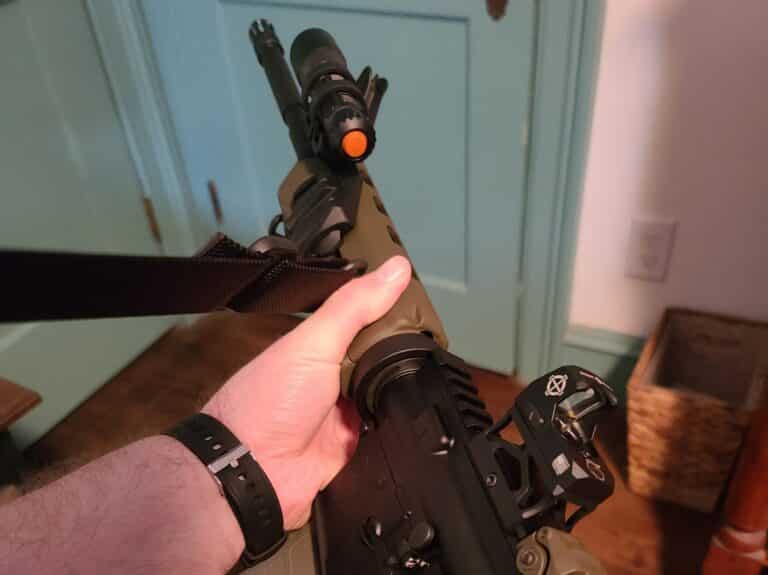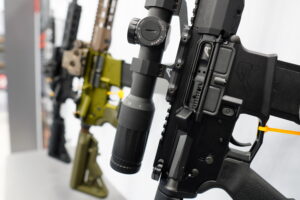As I rushed to pack for an emergency trip up to my mom’s farm because an escaped murderer had shown up just down the street and was now armed, I realized I had a problem. Several of the guns I was going to bet my family’s safety on were not up to the task.
On Tuesday, Danelo Cavalcante was spotted just a few miles from the farm. That put my mom, stepdad, grandmother, and grandfather at risk of running up against a man who escaped from prison after being convicted of stabbing his girlfriend to death in front of her children. Then, the threat ramped up as he stole a rifle from a nearby garage.
And that put me to work gathering a collection of guns best suited to try and counter him.
But, as I picked out the guns I wanted to take with me, two of the most important ones needed work before they could be useful. The more vital of them was my AR-15. Since Cavalcante was armed with a rifle, even if it was a relatively weak .22lr, I needed something that could match his range and outmatch his stopping power.
That’s where the AR I built years ago came into play. It was already set up pretty well for the task. Sure, it didn’t have a thermal sight or variable distance scope, which would have been most ideal. But I did have a very usable Sightmark red-dot sight, attached light, and sling.
The problem, as you may have guessed, showed up in the two battery-powered accessories on the gun. Other than occasional range trips, the AR mostly sits in the rack on my wall. The dot and light are both, of course, off when it’s up there.
However, that apparently wasn’t enough to keep them both from being dead when I grabbed it and went to pack it for the trip. The light worked fine after replacing the battery.
The red dot put up more of a fight. The next battery I put in didn’t work either, and I started to think the sight was broken. But a third battery solved the problem, which is good since I didn’t want to have the iron sights as my only option.
The AR didn’t have the only problematic red dot, though. My carry gun’s was even worse. I bought a Sig Sauer P365 X-Macro with a factory-installed Romeo Zero Elite earlier this year mostly because it offered a huge upgrade in capacity over my Springfield XDs. And the red dot offered easier sight acquisition.
Unfortunately, the dot’s battery died just about a month after I bought it. That’s an obvious red flag, but I figured it could be some issue with the original battery and gave it a second chance with a new battery. It failed the second change when I went to pick it up to pack, and the red dot didn’t illuminate.
Another dead battery. Unbelievable.
This was a bigger problem than with the Sightmark because, unlike that red dot, the Sig red dot must be completely removed from the gun to change the battery. That means it has to be re-zeroed every time you replace the battery. And I simply didn’t have time to re-zero before going up to the farm.
So, I brought the Springfield instead.
This provides some ammo for people who distrust integrating electronics into firearms for any purpose. Ironsights can’t run out of batteries. But I’m still not convinced the risks outweigh the benefits of using at least some electronics, especially when they do have backups. I am convinced electronics need a lot more babying and maintenance than most mechanical components.
Either way, the whole mess cost me time getting to the farm. It also made me fall back to a less effective sidearm.
Police caught Cavalcante after one restless night on the farm. So, thankfully, none of the problems mattered this time around.
But they very easily could have been decisive had things gone differently, especially if I hadn’t thoroughly checked my equipment before I made the trip up. If I’d discovered these issues as I unpacked the guns, it’s unlikely I could have gotten the relatively uncommon battery the red dot needs, and I probably wouldn’t have brought my backup carry gun. So, I would have been much less prepared.
It all serves as an excellent reminder to keep an eye on the things you plan to use to protect yourself and your loved ones. Batteries die, even when they’re not being used. Oil dries out. Rust develops. Screws go loose. Chaos happens.
It’s better to know what’s wrong when you actually have time to fix it.






